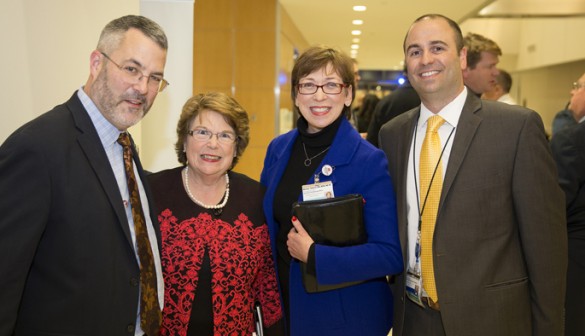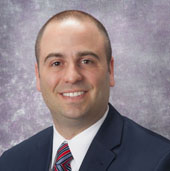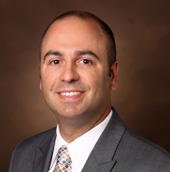
About 150 people gathered recently to celebrate Vanderbilt University Medical Center’s (VUMC’s) history of anesthesia and nurse anesthetists at a special reception and program in Light Hall.
The event was part of Certified Registered Nurse Anesthetist (CRNA) week, celebrating the accomplishments of more than 150 CRNAs at VUMC.
The ambitious program covered the period from 1875 (when anesthesia became widely used) to the present and featured more than a dozen speakers, representing former and current faculty and staff in the Department of Anesthesiology. Much of the history was told through personal stories from various eras.
“As you hear these stories… you certainly get a deep appreciation for the culture that Vanderbilt Anesthesia is and has become because of those who made it what it is today,” said Brent Dunworth, MSN, MBA, APN, CRNA, associate director for Anesthesia Advanced Practice and chief CRNA.
Michael Leersnyder, CRNA, MHSc, CRNA educator, kicked off the historical overview that started with the opening of Vanderbilt’s first hospital at Fifth Avenue and Elm Street, near downtown Nashville. Vanderbilt’s early history of innovation includes the Gwathmey & Woolsey Apparatus, co-invented by James Gwathmey, M.D., who graduated from Vanderbilt in 1899. The vapor inhaler was an early means of administering anesthesia.
Vanderbilt’s use of anesthesia gained momentum after the 1925 opening of the new Vanderbilt University School of Medicine and Medical Center building in what is now Medical Center North.
Irene Kellogg became the first nurse who administered anesthesia at VUMC, during the era of Barney Brooks, M.D., chief of Surgery from 1925 to 1951. When Kellogg retired in 1964, Joyce Cantrell was hired as the first certified registered nurse anesthetist at Vanderbilt.
Originally, the hospital had only four large and two small operating rooms located on the fourth floor of what is now Medical Center North. The work of surgical staff was partly illuminated by waist-to-ceiling windows, and doctors could view downtown Nashville as they performed surgery.
During that time, Sharon Baskette was hired as an anesthesia technician when there were only two others on staff. Thirty-nine years later, she’s just beginning her retirement from Vanderbilt.
“We love what we do,” she said. “We have a passion for it.”
The program included recollections from former chairs of the Department of Anesthesiology — Bradley Smith, M.D., Jeff Balser, M.D, Ph.D., now vice chancellor for Health Affairs; and Warren Sandberg, M.D., Ph.D., current chair of the department.
“I salute you and you have my deepest respect and my deepest gratitude,” Sandberg told the audience.
Vanderbilt’s growth accelerated with the opening of Vanderbilt University Hospital in 1980. The new hospital had 19 state-of-the-art ORs.
Several CRNAs were part of the presentation.
“From my personal journey here at Vanderbilt for 20 years, there has been one common thread that has kept me here year after year — there was always that feeling of family,” said Edith Newberry, CRNA. “We’ve laughed and we’ve cried. We’ve endured and we’ve really, really grown, but we’re still family.”
The number of CRNAs at Vanderbilt grew as surgical volume grew, from one in 1964 to 140 today.
“The future is particularly bright,” Dunworth said. “We have so much talent, and so much commitment.”
“The caliber of the Vanderbilt CRNAs is extraordinary,” added Marilyn Dubree, MSN, R.N., Executive Chief Nursing Officer.















